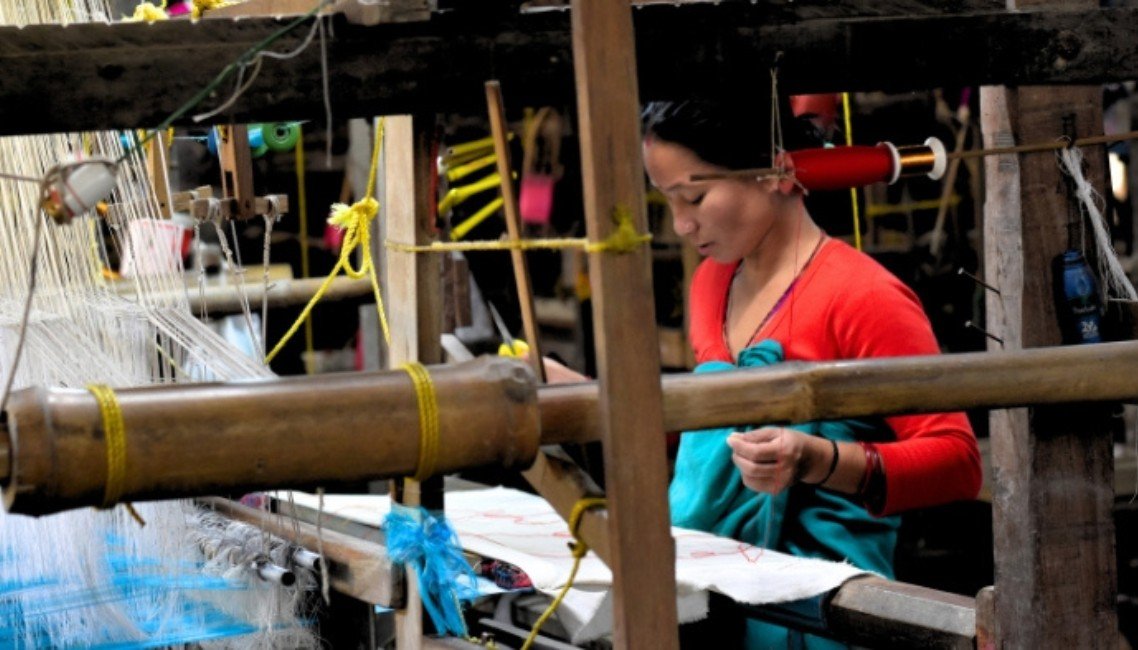This wishlist is empty.
You will find a lot of interesting products on our "Shop" page.

The ancient industry of sericulture in Assam dates back centuries and holds a rich and captivating history. The production of Muga silk, a unique and luxurious silk variety, received substantial patronage from the Ahom dynasty. This support led to the thriving of Muga culture, which became an integral part of the social and economic fabric of Assamese society.
One of the striking traditional garments worn by women in the region is the mekhela chador, a handwoven two-piece attire that has evolved over time. In the past, instead of a blouse, women would drape an unstitched garment called the riha around the upper body, complemented by the chador (also known as cheleng), a long unstitched fabric intricately wrapped around the mekhela using triangular folds. The cultural heritage of Assam is a fascinating product of the assimilation of diverse ethnocultural groups across different historical periods. This hybrid culture traces its roots back almost two thousand years when Austric, Tibeto-Burman, Indo-Aryans, and Austric people played pivotal roles in shaping Assamese culture. The assimilation took place in three waves: first with the Tibeto-Burman tribes, followed by the arrival of Indo-Aryans from Northern India, and finally culminating with the migration of the Ahoms. Often described as 'the Shangrila of North-Eastern India', Assam boasts awe-inspiring natural beauty, including rare flora and fauna, majestic hills, vast plains, expansive waterways, and dense forests. The region is particularly renowned for its indigenous silk varieties, Muga and Eri silk, which are produced from silkworms found exclusively in Assam. Muga silk, considered the crown jewel in Assam's treasures, holds a special significance. The town of Sualkuchi, nestled on the banks of the Brahmaputra, stands as the primary center for silk weaving. This riverside town is celebrated as the home of skilled Assamese weavers and is renowned for its silk trade, with almost every household engaged in this age-old craft. The hand-loom industry in Assam is predominantly characterized by the golden Muga silk, pat silk, and Eri silk. Weaving is a craft that evokes immense pride among Assamese women. Skilled weavers in Assam meticulously craft silk and cotton garments with exceptional designs on their looms, contributing to the region's rich textile heritage.
The Muga Mekhela sador and Muga saree hold significant cultural and traditional importance for Assamese women. The Mekhela Chador, the traditional attire of Assamese women, comprises two pieces of cloth draped on the upper and lower body. The lower piece, known as the ‘Mekhela,’ is a cylindrical garment worn from the waist downwards over a petticoat, with its pleats neatly folded to the right and tucked in securely. the Mekhela is folded in pleats to the right around the waist. The upper portion, or Chador, is tucked into the Mekhela’s upper portion at one end and elegantly draped around the upper body, resembling a pallu.
Typically, a fitted blouse is worn beneath the Chador, although traditionally, another garment called a riha was and is still worn. The Mekhela Chadors are available in three unique varieties distinguished by the type of silk used in their manufacturing. These include the Muga Mekhela Chador made using Muga Silk, the Eri Mekhela Chador made using Eri Silk, and the Pat Mekhela Chador made using Pat Mulberry Silk. The Muga and Pat Silk Mekhela Chadors are generally more exquisite and suitable for wearing on special occasions throughout the year. During the significant Assamese harvest festival Bihu, dancers wear Mekhelas made of Muga silk, which are highly prized for their elegance and durability. Additionally, there are various affordable Mekhela Chadors woven from blended fabrics such as cotton with Nuni , Muga and Tussar silk.
This wishlist is empty.